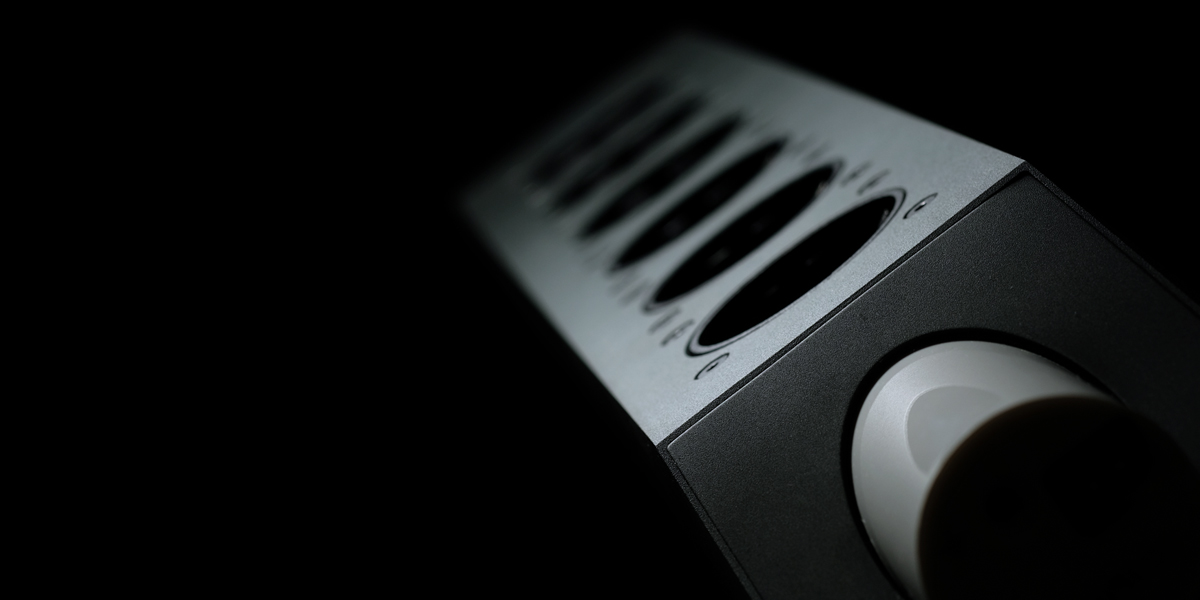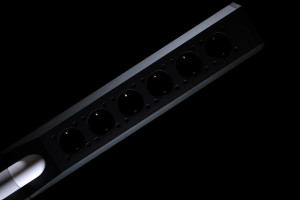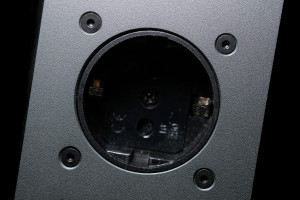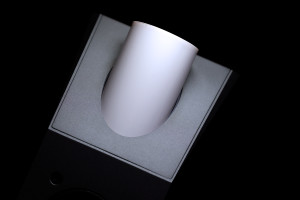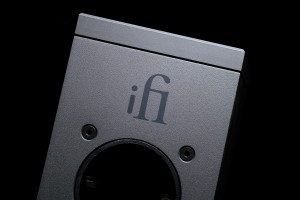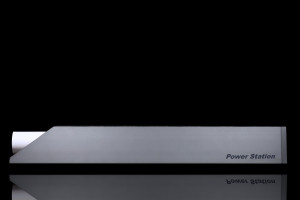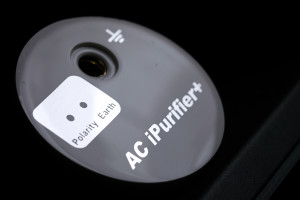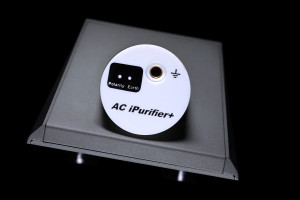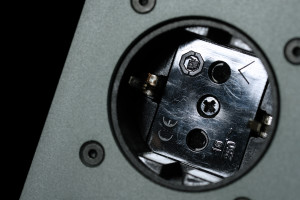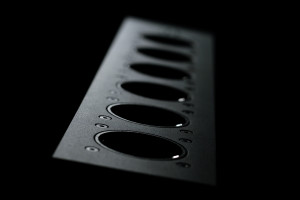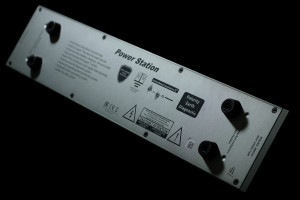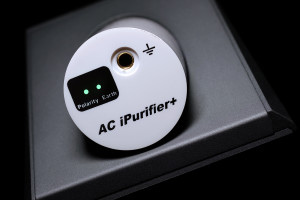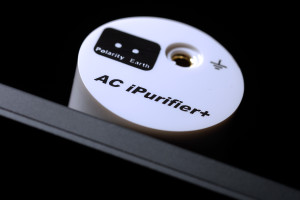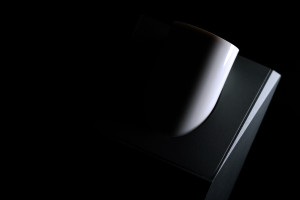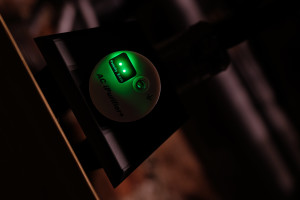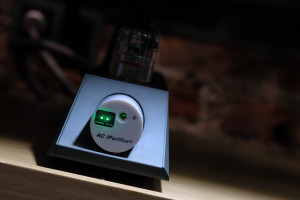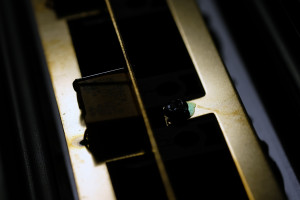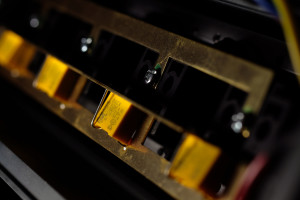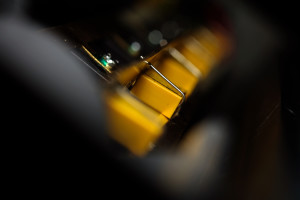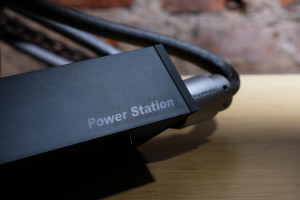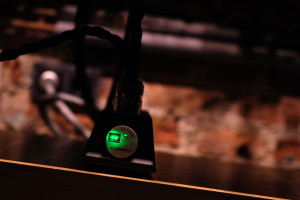For years iFi audio has been known mainly for quality DACs, headphone amps and multiple handy accessories mainly associated with USB. In late July 2019 this operation’s portfolio expanded in the not exactly new but quite intriguing direction, which resulted in today’s arrival – iFi audio PowerStation. Enjoy!
Introduction
iFi audio’s ongoing track record delivered multiple reasons to label its offer as very unique. Alongside goods considered as the industry’s standard, namely variously tiered, sized and priced d/a converters and headphone amps, this company’s portfolio also includes many products designed to address very specific and oftentimes niche subjects; grounding (Groundhog), headroom expansion for headphones/IEMs (iEMatch) or USB reclocking (iUSB3.0) and galvanic isolation (iGalvanic3.0). Let’s add harmonic injection via tubes (iTube2), an energizer for electrostatic cans (Pro iESL) or a full-sized desktop speaker system (Retro Stereo 50). All this screams profound versatility and forms the picture of iFi audio not shy from sending its engineering assassins deep into virgin territories. This hit squad is not only tasked to land meticulous kills, but also to return home safely on a budget to not raise any suspicions.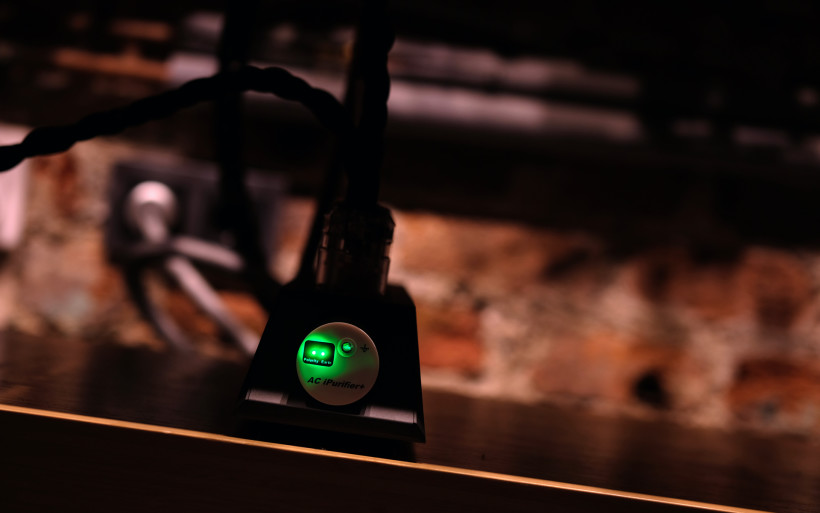 To frame the florid description above into the more understandable context, iFi audio’s micro iGalvanic3.0 and micro iUSB3.0 are two the most wallet-friendly residents of my main setup by far. These petite components off duty not only lead to its significant overall performance plunge, but also have been quite irreplaceable ever since I got them. Thus far I simply wasn’t able to find any USB upgrade as impactful as the iFi audio’s two-box team for less. Once this fact plus enjoyable rides with products such as Pro iCAN and Pro iDSD are taken into account, everything new by the team iFi colours me intrigued. Having said this, past my visit to this manufacturer’s room shared with its German distributor WOD Audio during this year’s HighEnd event, I was intrigued yet again.
To frame the florid description above into the more understandable context, iFi audio’s micro iGalvanic3.0 and micro iUSB3.0 are two the most wallet-friendly residents of my main setup by far. These petite components off duty not only lead to its significant overall performance plunge, but also have been quite irreplaceable ever since I got them. Thus far I simply wasn’t able to find any USB upgrade as impactful as the iFi audio’s two-box team for less. Once this fact plus enjoyable rides with products such as Pro iCAN and Pro iDSD are taken into account, everything new by the team iFi colours me intrigued. Having said this, past my visit to this manufacturer’s room shared with its German distributor WOD Audio during this year’s HighEnd event, I was intrigued yet again.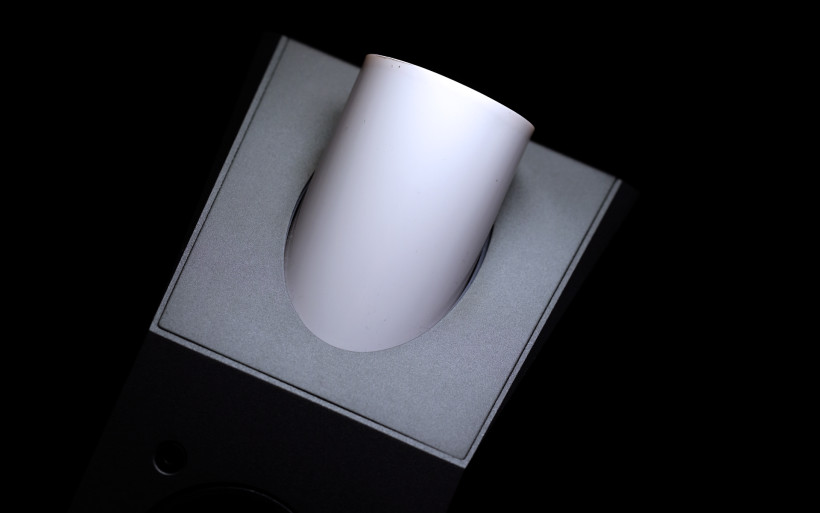 In Munich the iFi audio team showcased several products outside their usual. This company’s affordable ZEN series devices – ZEN Blue and ZEN DAC – weren’t quite up my alley early on. This changed after learning about the former’s LDAC support and internally balanced architecture in both by none other than John Curl. Nonetheless, iFi audio’s Aurora AiO crowd-pleaser and PowerStation were my privy highlights of the WOD Audio room, not costly big exoticism found in there. Once the local Audio Video Show exhibition ended, the latter product stayed with me and now is the time to tell its story.
In Munich the iFi audio team showcased several products outside their usual. This company’s affordable ZEN series devices – ZEN Blue and ZEN DAC – weren’t quite up my alley early on. This changed after learning about the former’s LDAC support and internally balanced architecture in both by none other than John Curl. Nonetheless, iFi audio’s Aurora AiO crowd-pleaser and PowerStation were my privy highlights of the WOD Audio room, not costly big exoticism found in there. Once the local Audio Video Show exhibition ended, the latter product stayed with me and now is the time to tell its story.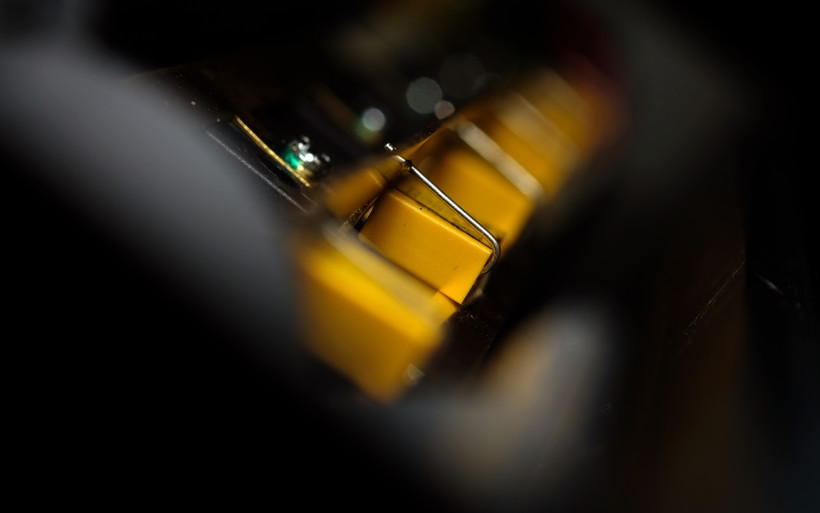 Before we’ll dig deeper, it’s fair to ask why iFi audio PowerStation actually happened. From purely marketing perspective it simply made sense to eventually land such a product. Every audio enthusiast sooner or later will need something of the sort, so that’s that. But iFi audio’s awareness of how important power is in our hobby plus several successful items released in the past (iPower, DC iPurifier and AC iPurifier) are key. This company’s proprietary silencing technology implemented in yet another universally applicable item such as today’s, begs the question about any downsides of pursuing this route. There are none I’m aware of, iFi audio PowerStation at some point simply made too much sense to not emerge. At least that’s how I see it.
Before we’ll dig deeper, it’s fair to ask why iFi audio PowerStation actually happened. From purely marketing perspective it simply made sense to eventually land such a product. Every audio enthusiast sooner or later will need something of the sort, so that’s that. But iFi audio’s awareness of how important power is in our hobby plus several successful items released in the past (iPower, DC iPurifier and AC iPurifier) are key. This company’s proprietary silencing technology implemented in yet another universally applicable item such as today’s, begs the question about any downsides of pursuing this route. There are none I’m aware of, iFi audio PowerStation at some point simply made too much sense to not emerge. At least that’s how I see it.
Build
iFi audio PowerStation arrived inside of a cardboard tailored to fit just the product and that’s it. Its warranty card and short manual aside, no extra additions were found in there and rightfully so, products such as today’s power bar don’t need anything else to get going if someone asks me. iFi audio PowerStation measures (W x H x D) 96 x 76 x 478mm and its mass ticks just a hair below 2 kilograms. These numbers imply a regularly shaped and sized power bar, though substantially hefty on hand.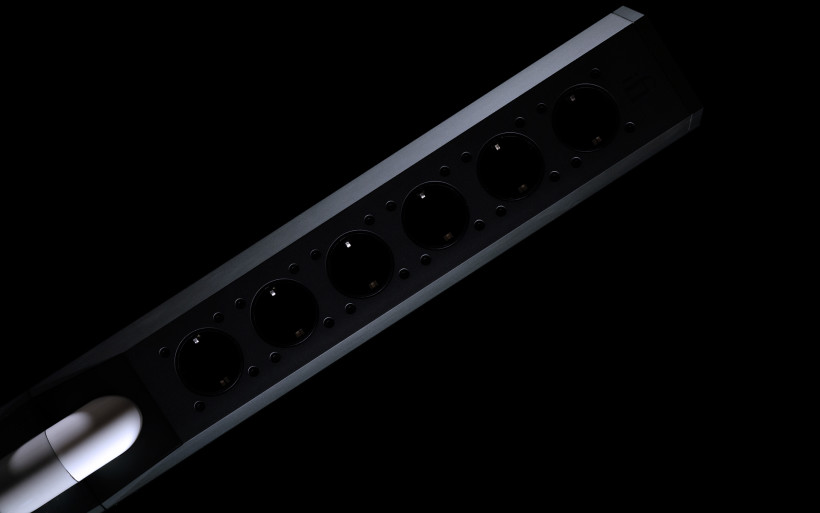 iFi audio PowerStation’s enclosure made of aluminium plates incorporates the main IEC inlet with on/off switch on one side, the company’s own AC iPurifier+ module on the other and six Schuko outlets on top. That’s the industry’s standard, nothing out of ordinary. This review’s component is available in four different versions: US, EU, UK and AU. Naturally some will fit six individual outlets in total, i.e. my European loaner, and some eight. The same top surface simply can accommodate two extra sockets of smaller frame versus i.e. their EU equivalents.
iFi audio PowerStation’s enclosure made of aluminium plates incorporates the main IEC inlet with on/off switch on one side, the company’s own AC iPurifier+ module on the other and six Schuko outlets on top. That’s the industry’s standard, nothing out of ordinary. This review’s component is available in four different versions: US, EU, UK and AU. Naturally some will fit six individual outlets in total, i.e. my European loaner, and some eight. The same top surface simply can accommodate two extra sockets of smaller frame versus i.e. their EU equivalents.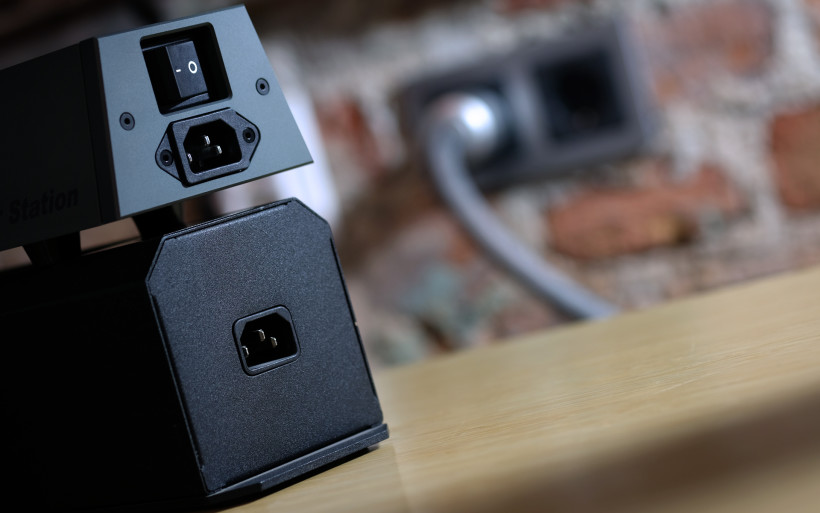 Today’s sits on four rubber washers fixed to its underbelly and each of these neighbours with a slightly concaved cone, to be used if one would like to involve i.e. decoupling spikes instead of the usual option. iFi audio PowerStation’s overall fit’n’finish gives no reasons to complain. The product is very nicely executed considering its affordable ask and feels pleasantly substantial. Its dark gray matte finish and very much stealthy visuals I’ve found appealing.
Today’s sits on four rubber washers fixed to its underbelly and each of these neighbours with a slightly concaved cone, to be used if one would like to involve i.e. decoupling spikes instead of the usual option. iFi audio PowerStation’s overall fit’n’finish gives no reasons to complain. The product is very nicely executed considering its affordable ask and feels pleasantly substantial. Its dark gray matte finish and very much stealthy visuals I’ve found appealing. It became a sort of tradition to see most iFi audio products’ features listed on their undersides and this report’s PowerStation fits the profile. But most importantly, iFi’s portfolio quite crowded with non-mainstream goods also includes universal designs, but even those always incorporate numerous twists on-board and here’s where this report’s loaner ticks off yet another checkbox. Early on it would be safe to assume that the PowerStation is yet another rather regular power bar. It looks like one indeed, however multiple descriptions found on its bottom imply that this one goes far beyond the usual. Today’s is a power distributor, but also an active noise suppressor, Earth/Polarity indicator, grounding sorter and an over-voltage protector on top of that. Quite the set of skills for a product styled to look like a power distributor, isn’t it?
It became a sort of tradition to see most iFi audio products’ features listed on their undersides and this report’s PowerStation fits the profile. But most importantly, iFi’s portfolio quite crowded with non-mainstream goods also includes universal designs, but even those always incorporate numerous twists on-board and here’s where this report’s loaner ticks off yet another checkbox. Early on it would be safe to assume that the PowerStation is yet another rather regular power bar. It looks like one indeed, however multiple descriptions found on its bottom imply that this one goes far beyond the usual. Today’s is a power distributor, but also an active noise suppressor, Earth/Polarity indicator, grounding sorter and an over-voltage protector on top of that. Quite the set of skills for a product styled to look like a power distributor, isn’t it? Power bars such as PowerStation are usually passive; their goal is to distribute power to all connected hardware, oftentimes clean it a bit via various filtering blocks and that’s it. It’s also fair to say that there’s a reason why top of the line goods of this sort usually don’t sport any active and protective circuits. Although useful, these features are said to negatively impact dynamics and that’s something I can agree with. That’s why many reviewers/heavyweight enthusiasts/journalists have been rolling with this purist group instead of i.e. far pricier power conditioners or regenerators, not to mention that some expensive products, i.e. my DAC, sound substantially better if plugged to in-wall outlets directly. But all this aside, in the iFi audio’s world active noise suppression beats any passive measure on efficiency. We can of course debate for hours what type of a power component is more beneficial, to whom and when, experience with such items developed my own preferences as well. However, it’d be a major crime not to acknowledge the simple fact that the team iFi introduced an active power component for pennies.
Power bars such as PowerStation are usually passive; their goal is to distribute power to all connected hardware, oftentimes clean it a bit via various filtering blocks and that’s it. It’s also fair to say that there’s a reason why top of the line goods of this sort usually don’t sport any active and protective circuits. Although useful, these features are said to negatively impact dynamics and that’s something I can agree with. That’s why many reviewers/heavyweight enthusiasts/journalists have been rolling with this purist group instead of i.e. far pricier power conditioners or regenerators, not to mention that some expensive products, i.e. my DAC, sound substantially better if plugged to in-wall outlets directly. But all this aside, in the iFi audio’s world active noise suppression beats any passive measure on efficiency. We can of course debate for hours what type of a power component is more beneficial, to whom and when, experience with such items developed my own preferences as well. However, it’d be a major crime not to acknowledge the simple fact that the team iFi introduced an active power component for pennies.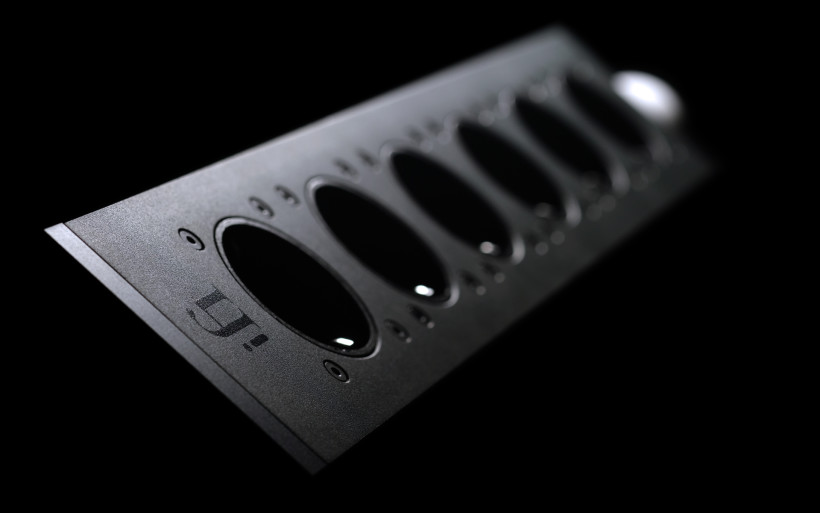 Once it’s known what iFi audio PowerStation is, let’s shift our focus to how it does everything. Its outer aluminium shell is coated with EMI/RFI resistive paint and its one side houses a fixed AC iPurifier+ module also sold separately, albeit without the ‘+’ version. Due to this addition’s presence, PowerStation incorporates iFi’s proprietary ANCII (Active Noise Cancellation II) technology, developed to measure signal from the mains and then inject artificially generated oppositely phased identical wave to cancel/significantly reduce incoming junk in effect, in principle just like headphones with ANC on-board do it. According to iFi, their active noise suppression eliminates far more noise in far broader range in comparison to passive filtering methods.
Once it’s known what iFi audio PowerStation is, let’s shift our focus to how it does everything. Its outer aluminium shell is coated with EMI/RFI resistive paint and its one side houses a fixed AC iPurifier+ module also sold separately, albeit without the ‘+’ version. Due to this addition’s presence, PowerStation incorporates iFi’s proprietary ANCII (Active Noise Cancellation II) technology, developed to measure signal from the mains and then inject artificially generated oppositely phased identical wave to cancel/significantly reduce incoming junk in effect, in principle just like headphones with ANC on-board do it. According to iFi, their active noise suppression eliminates far more noise in far broader range in comparison to passive filtering methods.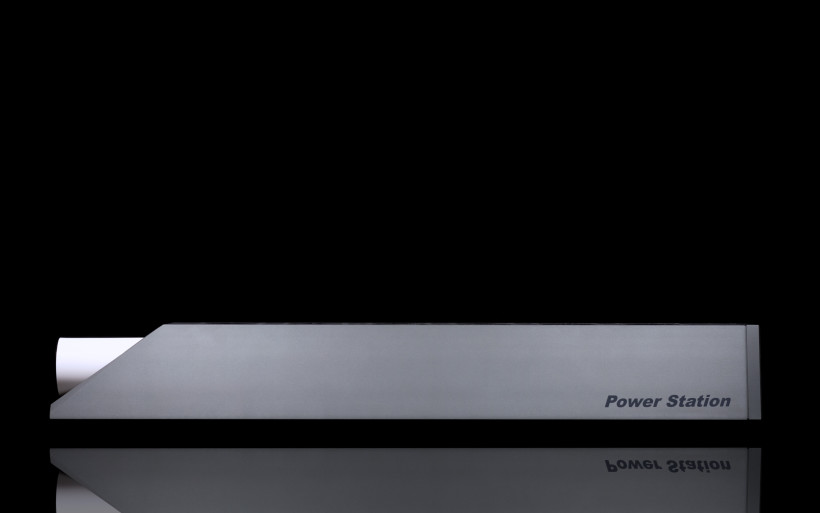 iFi audio PowerStation’s in-built AC iPurifier+ module also informs us about correct Polarity/Earth. Both LEDs on this module’s side are green if everything’s dandy, otherwise one or both go red, it depends on what’s wrong. The 4.4mm banana socket nearby allows one to use iFi’s own Groundhog to dismiss ground loops. This solution, rightfully named ‘IntelliGround’ as it turns out, is smart enough to recognize whether a ground is or isn’t needed, so in the event of connecting an excessive Groundhog, it’ll remain disengaged.
iFi audio PowerStation’s in-built AC iPurifier+ module also informs us about correct Polarity/Earth. Both LEDs on this module’s side are green if everything’s dandy, otherwise one or both go red, it depends on what’s wrong. The 4.4mm banana socket nearby allows one to use iFi’s own Groundhog to dismiss ground loops. This solution, rightfully named ‘IntelliGround’ as it turns out, is smart enough to recognize whether a ground is or isn’t needed, so in the event of connecting an excessive Groundhog, it’ll remain disengaged.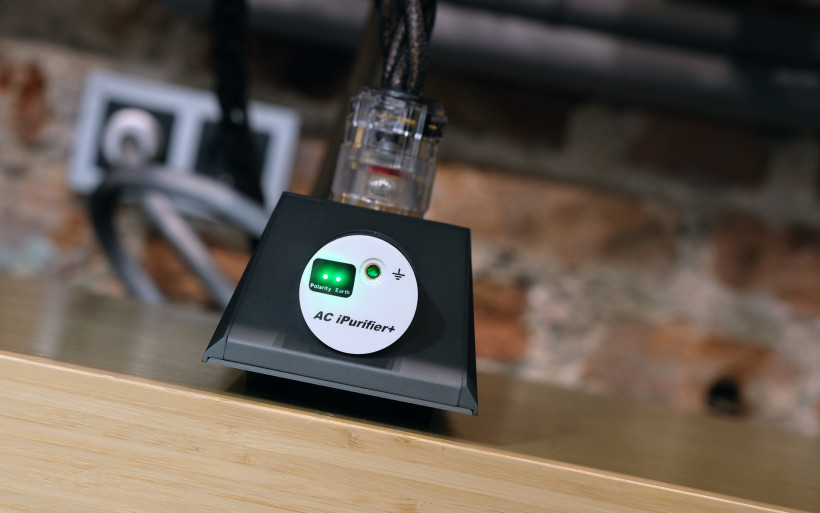 Inside of the product we see massive copper distribution bars. These are not clamped but soldered to internal circuitry via hefty cuts of OFC wire. Each PowerStation’s outlet is independently isolated in its own chamber to prevent differential mode cross-contamination. Strategically placed EVA (Ethylene Vinyl Acetate) inserts reduce vibrations. The over-voltage surge protection module based on MOVs (Metal Oxide Varistors) was designed to be effective up to 30,000A@1,000V/10uS. Without having any way to check this, we’ll have to put some trust in engineers on iFi’s payroll. But interestingly, if an issue leading to a PowerStation’s sudden shutdown still remains, until it’s resolved the product won’t turn on to further protect connected hardware.
Inside of the product we see massive copper distribution bars. These are not clamped but soldered to internal circuitry via hefty cuts of OFC wire. Each PowerStation’s outlet is independently isolated in its own chamber to prevent differential mode cross-contamination. Strategically placed EVA (Ethylene Vinyl Acetate) inserts reduce vibrations. The over-voltage surge protection module based on MOVs (Metal Oxide Varistors) was designed to be effective up to 30,000A@1,000V/10uS. Without having any way to check this, we’ll have to put some trust in engineers on iFi’s payroll. But interestingly, if an issue leading to a PowerStation’s sudden shutdown still remains, until it’s resolved the product won’t turn on to further protect connected hardware.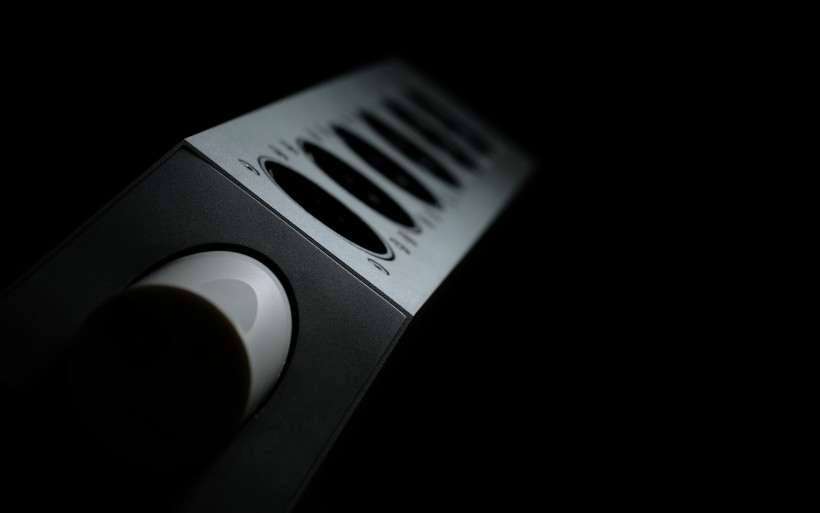 Functionality wise, it’s difficult to find any real competition for this review’s item. I’m aware of none this versatile, affordable and also active at the same time. My trusty old GigaWatt PF-2 power strip is substantially more expensive (€1’020) even if bundled with the most budget-friendly LC-1 EVO power cord. But let’s assume that without this leash, both GigaWatt’s and iFi audio’s power distributors are roughly in the same ballpark. The similarly bulky former also sports polarity indicator and has its protective plot most likely based on varistors as well, yet isn’t of active type and doesn’t allow one to easily handle grounding issues. Now is the time to finally find out how all iFi audio’s promises translate to sonics.
Functionality wise, it’s difficult to find any real competition for this review’s item. I’m aware of none this versatile, affordable and also active at the same time. My trusty old GigaWatt PF-2 power strip is substantially more expensive (€1’020) even if bundled with the most budget-friendly LC-1 EVO power cord. But let’s assume that without this leash, both GigaWatt’s and iFi audio’s power distributors are roughly in the same ballpark. The similarly bulky former also sports polarity indicator and has its protective plot most likely based on varistors as well, yet isn’t of active type and doesn’t allow one to easily handle grounding issues. Now is the time to finally find out how all iFi audio’s promises translate to sonics.
Sound
In order to review iFi audio PowerStation, fidata HFAS-S10U handled storage and transport duties, then LampizatOr Pacific DAC (KR Audio T-100/Living Voice 300B + KR Audio 5U4G Ltd. Ed.) took over to pass the signal either to Kinki Studio EX-M1 or Trilogy 925, and then to either Cube Audio Nenuphar, or supportively Xavian Jolly. All key components were fed via two LessLoss C-MARC and one Audiomica Laboratory’s Ness Excellence either to the GigaWatt’s PF-2 model, or today’s. Both power bars were alternately bonded with the main wall outlet via GigaWatt’s LC-3 EVO cord always plugged in there. The Amber-modded Excellence ICs by Audiomica Laboratory were used in-between my DAC and amps married to loudspeakers via Boenicke Audio S3 speaker cables.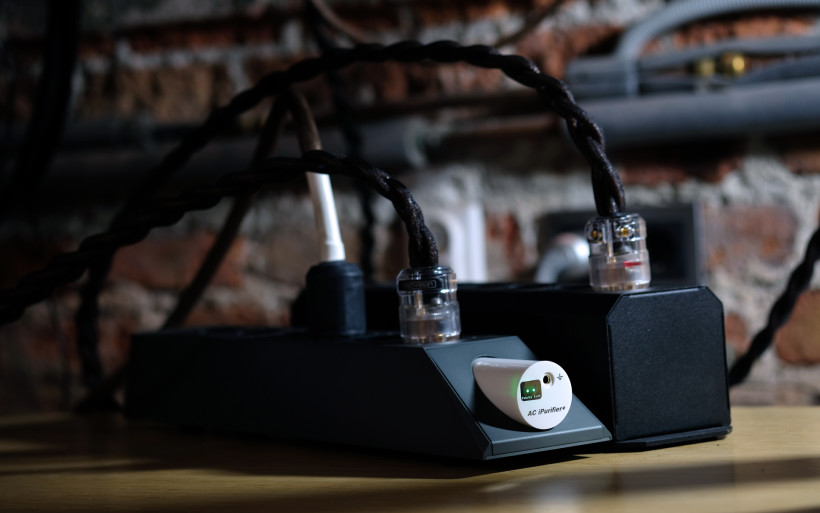 As usual in all power related comparisons, it’s crucial to have everything double-checked. Polarity at the first junction, namely from the main outlet to the two contestants, was of no issue. Both items capable of indicating its correctness quickly sorted any associated issues. But even without their handy polarity LEDs available, the main outlet probed and then bonded with the first power cord not unplugged ever since, would handle this matter just as fine. That’s what I did anyway. But in order to provide the same exact conditions in both cases, not only all used power cables had to land in the same sockets, but extra attention was given to live and neutral pins. Having all this on mind with each transition from one power bar to another, I was ready with a probe nearby. Ah, and lastly, my PF-2 specimen is about seven years old, thus internally less advanced in comparison to its currently manufactured MK2 version and also most likely less effective. The GigaWatt team has made a significant progress over these years. That’s why the comparison below I’d take with a pinch of salt if I were you.
As usual in all power related comparisons, it’s crucial to have everything double-checked. Polarity at the first junction, namely from the main outlet to the two contestants, was of no issue. Both items capable of indicating its correctness quickly sorted any associated issues. But even without their handy polarity LEDs available, the main outlet probed and then bonded with the first power cord not unplugged ever since, would handle this matter just as fine. That’s what I did anyway. But in order to provide the same exact conditions in both cases, not only all used power cables had to land in the same sockets, but extra attention was given to live and neutral pins. Having all this on mind with each transition from one power bar to another, I was ready with a probe nearby. Ah, and lastly, my PF-2 specimen is about seven years old, thus internally less advanced in comparison to its currently manufactured MK2 version and also most likely less effective. The GigaWatt team has made a significant progress over these years. That’s why the comparison below I’d take with a pinch of salt if I were you.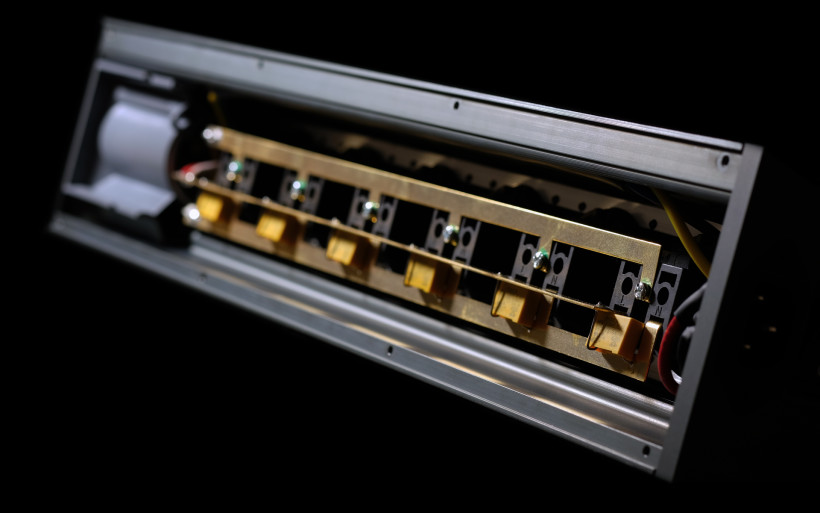 Let’s put my GigaWatt PF-2 under the scope first. It’s a still sanely priced power distribution role model. It paints quite the accurate picture of what this group of products should do versus non-audio power strips bought for several bucks at a local electronic store. Put up against such rivals, the PF-2 will introduce more details, clarity and musical landscape filled with virtual shapes outlined finer, but most importantly it’ll net a result speedier and tighter. However, additional benefits such as extra moisture, insight and spatial extension in all directions are all available in costlier passive components. My PF-2’s reach is fairly limited on these counts, which is nothing out of the ordinary given this item’s price. However, iFi audio PowerStation heavily leans towards the moist direction right away.
Let’s put my GigaWatt PF-2 under the scope first. It’s a still sanely priced power distribution role model. It paints quite the accurate picture of what this group of products should do versus non-audio power strips bought for several bucks at a local electronic store. Put up against such rivals, the PF-2 will introduce more details, clarity and musical landscape filled with virtual shapes outlined finer, but most importantly it’ll net a result speedier and tighter. However, additional benefits such as extra moisture, insight and spatial extension in all directions are all available in costlier passive components. My PF-2’s reach is fairly limited on these counts, which is nothing out of the ordinary given this item’s price. However, iFi audio PowerStation heavily leans towards the moist direction right away. It quickly turned out that today’s was not alike the PF-2. Yes, both products distributed power to all components without a miss just as they should, but two distinctively different sonic routes they took. If the GigaWatt would introduce one to the passive power game, then the PowerStation would act like a power conditioner. The latter sang softer, more fetchingly and nuanced, it projected images suspended deep in musical canvas more explicitly, was texturally more sophisticated and also more fluent all around. After several back and forths, this quite unmistakable instrumental moisture and blackness strongly associated with silence, both emerged pronouncedly enough to be mapped as the PowerStation’s key fortes. On nuance extraction this power bar also scored higher and had its upstairs smoother plus less icy versus the PF-2. One could ask why so and the most obvious logical answer is found in the Brit’s more potent noise killing action.
It quickly turned out that today’s was not alike the PF-2. Yes, both products distributed power to all components without a miss just as they should, but two distinctively different sonic routes they took. If the GigaWatt would introduce one to the passive power game, then the PowerStation would act like a power conditioner. The latter sang softer, more fetchingly and nuanced, it projected images suspended deep in musical canvas more explicitly, was texturally more sophisticated and also more fluent all around. After several back and forths, this quite unmistakable instrumental moisture and blackness strongly associated with silence, both emerged pronouncedly enough to be mapped as the PowerStation’s key fortes. On nuance extraction this power bar also scored higher and had its upstairs smoother plus less icy versus the PF-2. One could ask why so and the most obvious logical answer is found in the Brit’s more potent noise killing action.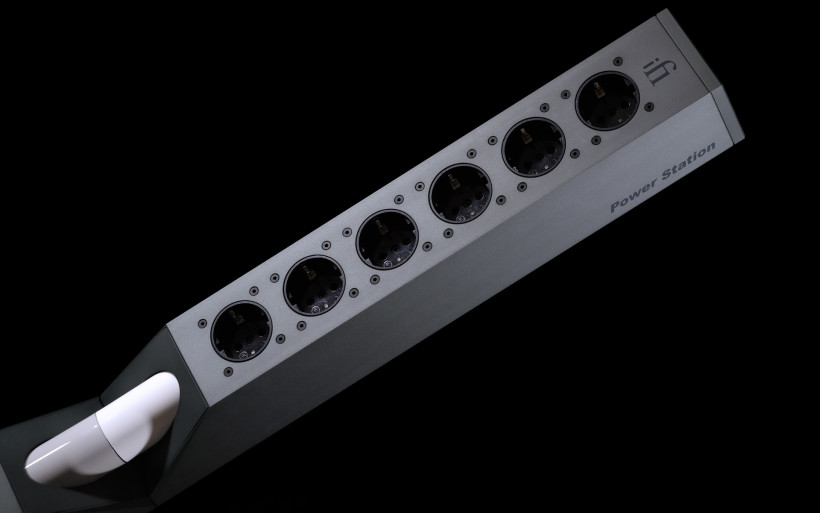 Even though this subject was tackled in the past by other reviewers including yours truly, it won’t escape us this time as well. Low noise floor’s impact on music grasped once, will remain clearly recognizable ever since. At first we view this particular cleaning service as a tonally more gravitational shift with top end trimmed, thus a result darker and less precise. But once it settles down and our ears accommodate to this new order, it’s the other way around; extra subtleties emerge, everything’s more visible, present, outlined less coarsely, filled with wider range of colours and displayed on a finer, darker backdrop. Prior to witnessing that fetching blackness any earlier, untrained ears will simply get more out of it than they’re able to initially intake, digest and understand. As I wrote, it takes a while to adjust to it. Silence is not flashy but sensual in a way, and that’s what iFi’s PowerStation does versus the PF-2. It’s subtler and less flashy indeed.
Even though this subject was tackled in the past by other reviewers including yours truly, it won’t escape us this time as well. Low noise floor’s impact on music grasped once, will remain clearly recognizable ever since. At first we view this particular cleaning service as a tonally more gravitational shift with top end trimmed, thus a result darker and less precise. But once it settles down and our ears accommodate to this new order, it’s the other way around; extra subtleties emerge, everything’s more visible, present, outlined less coarsely, filled with wider range of colours and displayed on a finer, darker backdrop. Prior to witnessing that fetching blackness any earlier, untrained ears will simply get more out of it than they’re able to initially intake, digest and understand. As I wrote, it takes a while to adjust to it. Silence is not flashy but sensual in a way, and that’s what iFi’s PowerStation does versus the PF-2. It’s subtler and less flashy indeed. Black canvas for music, everything displayed on it pleasantly round, vivid and organic plus all details in check, form the PowerStation’s core voice. This product favours textural generosity and calmness over pinpoint accuracy, sharp edges, clarity and immediacy. It’s more of a musical instrument than a soulless audio tool. Come to think of it, all this makes sense. Many iFi’s products sport this exact approach, but that’s of minor importance. What does matter however, is the fact that engineers at iFi audio seem to have the necessary know-how to land a solid power component, very much along the lines of a proper power conditioner. The PF-2 versus today’s sounded coarser, less orderly, less subtle, less polite and sharper, but also was voiced to focus one’s attention on details and everything outlined clearly. I can imagine multiple scenarios where the GigaWatt’s more ferocious attitude would fit in perfectly. Chunky setups in desperate need of clarity more than anything else would benefit from the PF-2’s input. That’s why this one is more of a situational item, whereas the PowerStation in my privy book takes the lead as more universal and easier to listen to.
Black canvas for music, everything displayed on it pleasantly round, vivid and organic plus all details in check, form the PowerStation’s core voice. This product favours textural generosity and calmness over pinpoint accuracy, sharp edges, clarity and immediacy. It’s more of a musical instrument than a soulless audio tool. Come to think of it, all this makes sense. Many iFi’s products sport this exact approach, but that’s of minor importance. What does matter however, is the fact that engineers at iFi audio seem to have the necessary know-how to land a solid power component, very much along the lines of a proper power conditioner. The PF-2 versus today’s sounded coarser, less orderly, less subtle, less polite and sharper, but also was voiced to focus one’s attention on details and everything outlined clearly. I can imagine multiple scenarios where the GigaWatt’s more ferocious attitude would fit in perfectly. Chunky setups in desperate need of clarity more than anything else would benefit from the PF-2’s input. That’s why this one is more of a situational item, whereas the PowerStation in my privy book takes the lead as more universal and easier to listen to.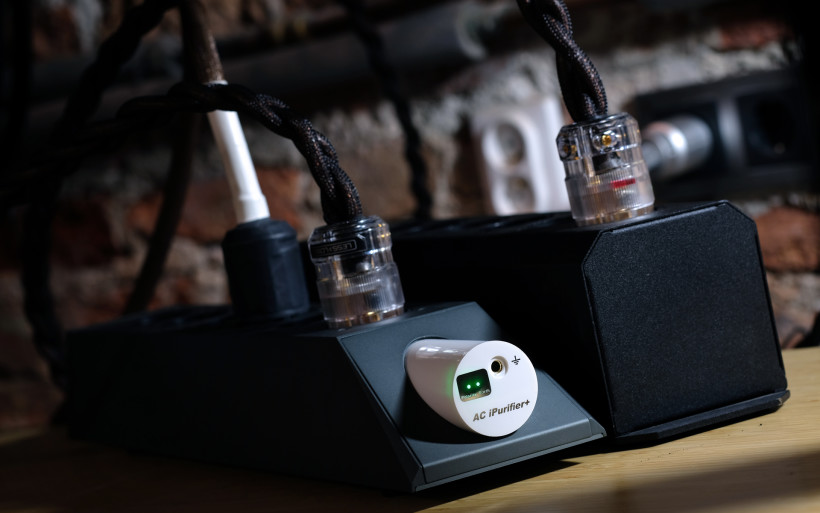 What impressed me the most in this review’s battle was bass. The PowerStation had it bloomier and rounder yet in check, whereas the PF-2 was a bit wobbly though slimmer. Usually it’s the other way around, bloom tends to attract weaker downstairs grip, but one thing about the Brit has to be said out loud. Even though this one turned out to be the more potent noise killer with no second guesses, and also more sophisticated and expressive performer in general, it was also audibly slower. The GigaWatt’s and PowerStation’s different voicings aside, the fundamental disparity between them was in sheer speed and snap. The latter sounded more euphonic, milder and coherent plus had its backdrop darker and that’s all dandy, but with feisty repertoire based on wild artificial bass slams, it simply was more mild and less exciting. It invoked gentle foot swings instead of proper tapping, which all in all made quite the difference. The ideal scenario would involve PowerStation’s velvet charm merged with the PF-2’s agility and that’s perfectly achievable, but far above these two items’ price tags even if combined.
What impressed me the most in this review’s battle was bass. The PowerStation had it bloomier and rounder yet in check, whereas the PF-2 was a bit wobbly though slimmer. Usually it’s the other way around, bloom tends to attract weaker downstairs grip, but one thing about the Brit has to be said out loud. Even though this one turned out to be the more potent noise killer with no second guesses, and also more sophisticated and expressive performer in general, it was also audibly slower. The GigaWatt’s and PowerStation’s different voicings aside, the fundamental disparity between them was in sheer speed and snap. The latter sounded more euphonic, milder and coherent plus had its backdrop darker and that’s all dandy, but with feisty repertoire based on wild artificial bass slams, it simply was more mild and less exciting. It invoked gentle foot swings instead of proper tapping, which all in all made quite the difference. The ideal scenario would involve PowerStation’s velvet charm merged with the PF-2’s agility and that’s perfectly achievable, but far above these two items’ price tags even if combined.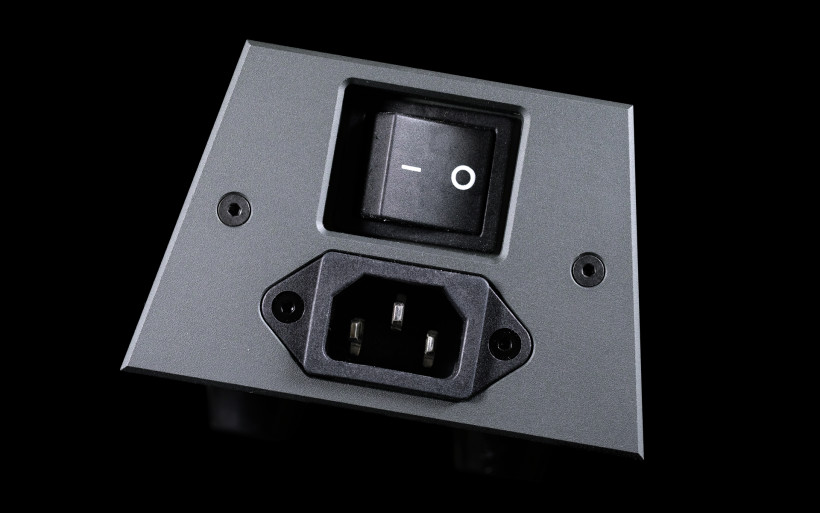 Once I knew well where the Brit landed against the PF-2, the latter’s bigger kin – PC-3 SE EVO+ – stepped in. In comparison to the local full-sized deck, today’s clearly was geared to sound alike; it tackled the same issues, put the same key musical traits on the pedestal and once more introduced itself as a product designed to do music, which at this point was already recognized as the aftereffect of its silencing treatment generously applied. Although similarly voiced, the big GigaWatt did more of the same things to score extra points on potency plus was also quicker. It overshadowed both power bars just as a specimen twelve times more expensive than today’s should. Nonetheless, I wouldn’t label the Brit as less effective this many times over, it’s no news that audio doesn’t work like that. The PowerStation was audibly behind my PC-3 SE EVO+ daily driver, true that, but what it did and how, reminds us about two things; how much extra we usually have to pay to get more, and with how much at times can we get away for far less. That’s the lesson iFi audio PowerStation leaves us with today.
Once I knew well where the Brit landed against the PF-2, the latter’s bigger kin – PC-3 SE EVO+ – stepped in. In comparison to the local full-sized deck, today’s clearly was geared to sound alike; it tackled the same issues, put the same key musical traits on the pedestal and once more introduced itself as a product designed to do music, which at this point was already recognized as the aftereffect of its silencing treatment generously applied. Although similarly voiced, the big GigaWatt did more of the same things to score extra points on potency plus was also quicker. It overshadowed both power bars just as a specimen twelve times more expensive than today’s should. Nonetheless, I wouldn’t label the Brit as less effective this many times over, it’s no news that audio doesn’t work like that. The PowerStation was audibly behind my PC-3 SE EVO+ daily driver, true that, but what it did and how, reminds us about two things; how much extra we usually have to pay to get more, and with how much at times can we get away for far less. That’s the lesson iFi audio PowerStation leaves us with today.
Summary
This review’s power bar way beyond the usual lines was anything but surprising. Over the years I simply got used to the fact that iFi audio’s R&D team doesn’t play the game accordingly to standard rules. These people always strive for more, go as far as they possibly can on features and iFi audio PowerStation fits the description perfectly. To my knowledge there’s no other power strip this functional, designed specifically for audio and affordable at the same time.
iFi audio has been known mainly for handy portable products, however its PowerStation proves us that this company knows how to do full-sized components as equally well. This product scores high on assembly and is styled interestingly enough to be visually appealing to this reporter’s eyes. Of course that’s of minor importance, such goods usually take the invisible place behind a hardware rack or a desk. However, today’s ability to easily solve grounding issues, its in-built over-voltage protection and Polarity/Earth LED indicators are useful additions. Products similar to PowerStation usually tick one or two listed checkboxes, none other I’m familiar with does all three.
iFi audio PowerStation’s active cleaning circuit is its most impressive virtue, but how it translates to sonics even more so. The result is highly efficient action, conceptually quite along the lines of what big power conditioners do. Even though that’s a guess based on my memory, the closest thing to iFi’s latest on performance would be SOtM’s nearly three times as costly and nowhere near as functional mt-1000 power distributor. This says a lot about the sanely priced former, which in fact gives far more in return than its ask would imply. Far more. ‘Till next time!
Associated Equipment:
- Amplifier: Trilogy 925, Kinki Studio EX-M1
- DAC: LampizatOr Pacific (KR Audio T-100 / Living Voice 300B + KR Audio 5U4G Ltd. Ed.)
- Speakers: Cube Audio Nenuphar, Xavian Jolly
- Transport: fidata HFAS-S10U
- Speaker cables: Boenicke Audio S3, LessLoss C-MARC
- Interconnects: Audiomica Laboratory Erys Excellence
- Power components: Gigawatt LC-3 EVO -> PC-3 SE EVO+, Gigawatt PF-2 + Gigawatt LC-2 MK2 + Forza AudioWorks Noir Concept/Audiomica Laboratory Ness Excellence/LessLoss C-MARC
- Rack: Franc Audio Accesories Wood Block Rack
- Music: NativeDSD
Retail prices of reviewed components in EU (incl. 22% VAT):
- iFi audio PowerStation: €549
Manufacturer: iFi audio


